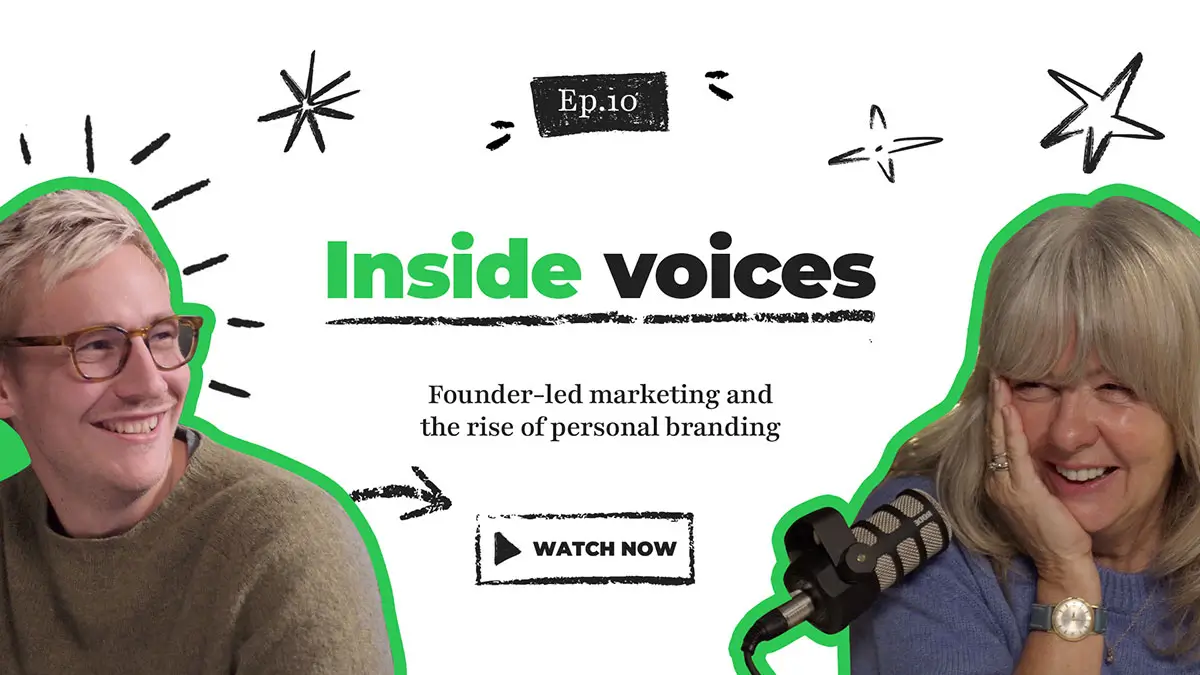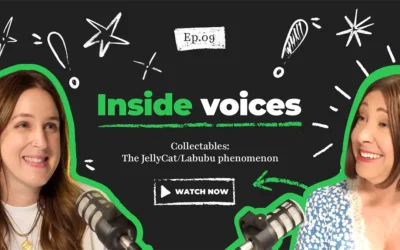With the whole world worshipping at the feet of the mighty echelon of influencers that controls our every purchase, decision and fancy, it’s no surprise that there’s been a blurring of the traditional lines between how a ‘business’ positions itself to the public and how an ‘individual’ does. The result is a hybrid pathway in which typically trivial concerns such as ‘personal branding’ become essential KPIs. Welcome to marketing in 2025. Welcome to founder-led marketing.
Firstly, what is founder-led marketing?
Without a formal marketing dictionary to rely upon (my current manuscript is under review at HarperCollins) it can be hard to officially define the emergence of this new marketing strategy. Still, as with all definitions, the ones that come easiest are those with the most revelatory names. Founder-led marketing doesn’t hide much in its title. It is indeed the practice of a business or organisation that has its external branding dominated by the public profile of its founder.
Its origins lie in 19th century business leaders such as King. C Gilette, of Gilette razor blades, Colonel Harland Sanders, of KFC and Thomas Lipton, of Lipton teas. Before there was Emma Chamberlain, Rihanna, Kanye West and Molly-Mae, these men were already keenly slapping their faces on their products – to much success, too. Because while the avenues and potentials for success in founder-led marketing have entirely changed, the core tenets have remained the same.
A black and white photograph of King. C Gilette points at you from a magazine, the copy and his flawless moustache both telling you his razors have pioneered the new field of ‘self-shaving’. Molly-Mae stares at you, flawlessly fake-tanned after a season of Love Island, to tell you her new product has perfected the field of ‘self-tanning’. It’s the same thing, two hundred years apart. And it’s incredibly powerful.
Of course, the essential difference between then and now lies in the fact that King. C Gilette only appeared briefly in print, whereas a modern-day founder appears in a thousand formats, across a thousand channels, for billions to consume, whenever they want, all the time – forever. King. C Gilette was indeed a founder whose face led much of the promotions for his product. However, founder-led marketing businesses today are entirely different. They wield significantly more power and influence, but it is a double-edged sword, sharp as a Gilette razor.
The good, the bad and the Elon
Life as a Tesla shareholder must certainly have its ups and downs. While the stock continues along an upwards gradient – a massive achievement for a U.S. car manufacturer – it also has a record of some of the most volatile activity in the market. Almost every incidence of which can be credited to the behaviour of its erratic founder, the world’s richest man, Elon Musk.
Much like the reputation of individuals (celebrities and influencers in particular) founder-led marketing businesses are susceptible to meteoric rises as much as they are catastrophic declines. By adopting founder-led marketing, you are taking the opportunity to personify your business. You’re making it more relatable, but also more vulnerable. Culpability is far more of a problem for a face than for a brand.
Let’s go back to the Coldplay concert where Astronomer CEO, Andy Byron was filmed in the throes of an alleged affair with the company’s Chief People Officer, Kristin Cabot. The event went astronomically viral and Astronomer announced Andy’s resignation a few days later. Though Andy’s reputation has crumbled, the business managed to plough on without any public scrutiny. This is thanks to the reputation of the business not being intrinsically tied to the reputation of its owner, as Tesla’s is. Had Astronomer been a founder-led business, the company likely would have plummeted all the way back down to earth with Andy.
Why use founder-led marketing in 2025 then?
One of the things to coincide with the rise of founder-led marketing is the growing expectation of trust placed on businesses. Amidst a landscape of AI and the newly manufactured mistrust of legacy media outlets, brand trust is essential to modern audiences – and they are getting better at detecting inauthenticity. Large, faceless organisations allow space for speculation, for conspiracy, and ultimately, distrust in a company and its product.
Founder-led marketing can serve as a remedy to this by offering consumers a sense of familiarity with a company. People naturally form relationships with faces much faster than products, and as the trust in the company – in this case, a person – improves, trust in the product does too. But this goes both ways, a face that betrays such trust is liable to a more dramatic response than a company without someone to point the finger at.
What’s our take on founder-led marketing?
After getting to this point in the blog, you can be forgiven for thinking that our stance is a bit wishy-washy on the subject of founder-led marketing. But that’s only because of our own closeness to the subject, courtesy of our founder, Debra Hepburn, who has led both RBH as managing director and a litany of other businesses, most notably Young British Designers, firmly in the spotlight.
As her son, I can say with only slight bias, that Deb has a good grasp on how the potential of founder-led marketing. In her words, it is about real authenticity, about honesty and about the principles of culture that have guided successful businesses for hundreds of years, and will continue to do so for hundreds of years hereafter.
But that’s already giving away far too much. If you really want to know what Deb’s take on founder-led marketing is, and on how you can successfully deploy founder-led marketing at your own business, then you’ll have to either read our blog on ‘what makes a good founder-led brand’ or watch our most recent episode of Inside Voices, where I myself speak to Deb at great length about her own experiences with founder-led marketing at its very outset, and her many successes. Including but not limited to, me.
For much, much more. Watch our latest Inside Voices episode here:





